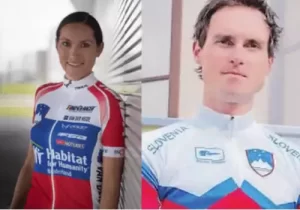Consciousness is usually directed to reaching a certain goal no matter the cost, rather than going faster toward the goal using conscious learning, better feeling, and consciously improved movement, as the AEQ method teaches.
If we refresh our memory: the AEQ method and breathing are about dealing with the causes of chronic pain and illnesses, which result from permanently raised muscle tone and a change in posture and movement of a person. These conditions also strongly influence breathing processes, which are especially susceptible to body influences and emotional stress. Learning is more efficient if we internalize it. Every jogger should pay attention not only to physical fitness but also on his mind’s mindfulness over the body. In the AEQ method, we call this control over the body or being conscious of oneself. It’s important to detect movement changes, which makes pinning the cause of pain or preventing even minor injuries easier.
We consciously check both posture and the way we sit, as well as walking and running. Some movements that we constantly perform unconsciously and automatically should also be observed and corrected. Then again, other moves are done actively – during sports and exercise or doing manual labor (behind a manufacturing belt or long hours behind an office computer, …).
These moves demand more energy and attention. Regular and conscious checking of movement preserves efficiency and eventually increases it and helps with more fluid and less difficult movement. It is true that if there is less effort, there can be more movement that is faster, and the possibility of injuries is smaller. We are talking about rationality or the rule of less for more: energy input is smaller, but the effect is larger due to vast knowledge.
However, we have to cultivate such a way persistently, and the effects are achieved only with regular learning – trying to do this quickly or when in pain will yield no long-term effects. Why? Learning is more efficient if we internalize it; what we learn becomes a part of us. The best kind of learning is practical learning, the results of which we then check and understand with the help of the theoretic part of the method. The rule of the AEQ method: we teach ourselves; the teacher only leads us. Learning to control movement is not a well-known method; it is not the most widespread in the developed world. To control first means to be conscious of, to follow our movement, and observe how we could improve it. We know that we can learn multiple types of skills, such as playing football, becoming a hairdresser, mechanic, a guitar player, bodybuilder, etc.
The mentioned techniques are well known everywhere, but knowing how to control the muscles in the body’s center, that we don’t see or don’t even know they exist, is barely known. And that’s where the issue is.
Conditions such as rigidity and pain from wear and tear are usually written off due to aging. While aging indeed does affect your skin and hair, movement problems usually come from the constantly larger subconscious muscle contraction. They are sped up even further by sensory-motor amnesia (SMA), which inhibits systems’ efficiency in the body. In short, what is SMA: every movement has a perceptible and moving component, and when a certain move becomes habitual, it becomes an involuntary reaction; we lose control over a certain move and its perceptiveness. Of course, SMA is universal in a person. However, when we injure ourselves or are overwhelmed by pain, it is good to evoke control and feeling.So, if we analyze the running rules, we learn that they don’t require good control over how we do certain moves, but the way to the finish line, a correct start, and the impact of effort, endurance, and strength on the final time. Many believe that running doesn’t even require any special knowledge. A runner spends most of his time focusing on endurance, speed, and trying to numb the pain.
Conditions such as rigidity and pain from wear and tear are usually written off due to aging. While aging indeed does affect your skin and hair, movement problems usually come from the constantly larger subconscious muscle contraction. They are sped up even further by sensory-motor amnesia (SMA), which inhibits systems’ efficiency in the body. In short, what is SMA: every movement has a perceptible and moving component, and when a certain move becomes habitual, it becomes an involuntary reaction; we lose control over a certain move and its perceptiveness. Of course, SMA is universal in a person. However, when we injure ourselves or are overwhelmed by pain, it is good to evoke control and feeling. So, if we analyze the running rules, we learn that they don’t require good control over how we do certain moves, but the way to the finish line, a correct start, and the impact of effort, endurance, and strength on the final time. Many believe that running doesn’t even require any special knowledge. A runner spends most of his time focusing on endurance, speed, and trying to numb the pain.
The AEQ method is a successful complement to the training process with its exercises and dedication to breathing. It allows to optimize muscle function, increases the ability to relax after an intense effort, and when breathing correctly, it regulates the balance between gasses and its pH; it raises the amount of nitric oxide in the lungs and the blood flow. That’s how it protects the body from its immune system failing.
The runner will remain happy about running, won’t make wrong decisions during training and competitions, and make his active running period longer.






